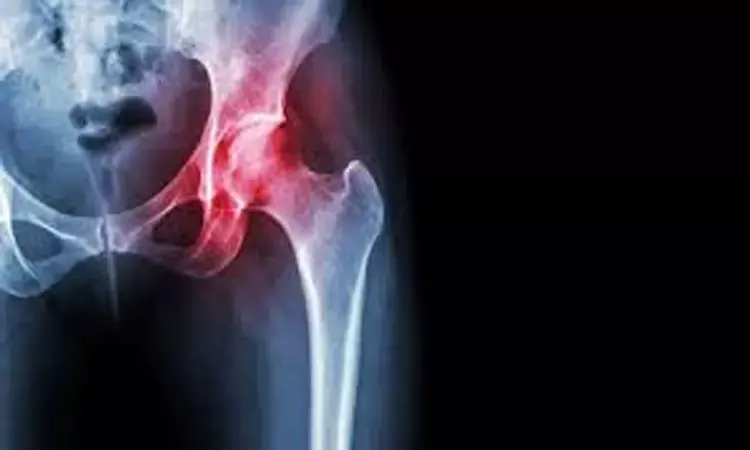- Home
- Medical news & Guidelines
- Anesthesiology
- Cardiology and CTVS
- Critical Care
- Dentistry
- Dermatology
- Diabetes and Endocrinology
- ENT
- Gastroenterology
- Medicine
- Nephrology
- Neurology
- Obstretics-Gynaecology
- Oncology
- Ophthalmology
- Orthopaedics
- Pediatrics-Neonatology
- Psychiatry
- Pulmonology
- Radiology
- Surgery
- Urology
- Laboratory Medicine
- Diet
- Nursing
- Paramedical
- Physiotherapy
- Health news
- Fact Check
- Bone Health Fact Check
- Brain Health Fact Check
- Cancer Related Fact Check
- Child Care Fact Check
- Dental and oral health fact check
- Diabetes and metabolic health fact check
- Diet and Nutrition Fact Check
- Eye and ENT Care Fact Check
- Fitness fact check
- Gut health fact check
- Heart health fact check
- Kidney health fact check
- Medical education fact check
- Men's health fact check
- Respiratory fact check
- Skin and hair care fact check
- Vaccine and Immunization fact check
- Women's health fact check
- AYUSH
- State News
- Andaman and Nicobar Islands
- Andhra Pradesh
- Arunachal Pradesh
- Assam
- Bihar
- Chandigarh
- Chattisgarh
- Dadra and Nagar Haveli
- Daman and Diu
- Delhi
- Goa
- Gujarat
- Haryana
- Himachal Pradesh
- Jammu & Kashmir
- Jharkhand
- Karnataka
- Kerala
- Ladakh
- Lakshadweep
- Madhya Pradesh
- Maharashtra
- Manipur
- Meghalaya
- Mizoram
- Nagaland
- Odisha
- Puducherry
- Punjab
- Rajasthan
- Sikkim
- Tamil Nadu
- Telangana
- Tripura
- Uttar Pradesh
- Uttrakhand
- West Bengal
- Medical Education
- Industry
Reduction in smoking and heavy drinking linked to fewer hip fractures: JAMA

A new study, which analyzed 40 years of Framingham Heart Study data, found an association between lowered rates of hip fractures and decreases in smoking and heavy drinking.
The rates of hip fractures in the United States have been declining over the past few decades. Although some experts attribute this change primarily to improved treatments for bone health, a new National Institutes of Health-supported study suggests other factors. These results indicate that modifiable lifestyle factors, along with treatments, may be beneficial to bone health. The findings appear July 27, 2020 in JAMA Internal Medicine.
Timothy Bhattacharyya, M.D., a researcher with the National Institute of Arthritis and Musculoskeletal and Skin Diseases (NIAMS), part of NIH, led the analysis to determine what may be causing the drop in hip fracture rates. The research team included scientists from NIH's National Cancer Institute, the Hinda and Arthur Marcus Institute for Aging Research, part of the Hebrew SeniorLife, Beth Israel Deaconess Medical Center, Boston, and Harvard Medical School, Boston.
The analysis included information from 4,918 men and 5,634 women who participated in the Framingham Study. These individuals were followed for a first hip fracture between Jan. 1, 1970, and Dec. 31, 2010. The rates for hip fractures, which were adjusted for age, dropped by 4.4% each year across the 40-year study period. The decrease was seen in both men and women.
In this group, the rate of smoking decreased from 38% in the 1970s to 15% in the period from 2006 to 2010. During the same period, heavy drinking (defined as three or more drinks per day) fell from 7% to 4.5%. The rates of other risk factors for hip fracture, such as underweight and early menopause, did not change over the study period.
"This study points to the continued need for public health interventions to target modifiable lifestyle factors such as smoking and drinking, in addition to considering osteoporosis treatments in individuals at risk of hip fractures," said Bhattacharyya.
"As we learn more about lifestyle factors that impact bone health, we continue to conduct research aimed at understanding all the factors that contribute to reducing fractures, including both lifestyle and medications, so that we can all live longer lives without disability," Robert H. Carter, M.D., acting director of NIAMS, added.
The Framingham Heart Study launched in 1948 to determine factors that contribute to cardiovascular disease. The National Heart, Lung, and Blood Institute, assumed responsibility for the project in 1949. Though many of the original participants have passed away, the study continues to examine another two generations of residents in and near Framingham, Massachusetts.
The study authors note that because the data was exclusively from white individuals, it is unclear whether other populations might show a similar correlation based on lifestyle factors. Another limiting factor was that Framingham participants had lower rates of obesity than the national average. Additionally, the study did not include measurements of bone mineral density, because such testing was not available until the 1990s.
Hina Zahid Joined Medical Dialogue in 2017 with a passion to work as a Reporter. She coordinates with various national and international journals and association and covers all the stories related to Medical guidelines, Medical Journals, rare medical surgeries as well as all the updates in the medical field. Email: editorial@medicaldialogues.in. Contact no. 011-43720751
Dr Kamal Kant Kohli-MBBS, DTCD- a chest specialist with more than 30 years of practice and a flair for writing clinical articles, Dr Kamal Kant Kohli joined Medical Dialogues as a Chief Editor of Medical News. Besides writing articles, as an editor, he proofreads and verifies all the medical content published on Medical Dialogues including those coming from journals, studies,medical conferences,guidelines etc. Email: drkohli@medicaldialogues.in. Contact no. 011-43720751


